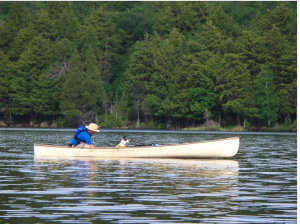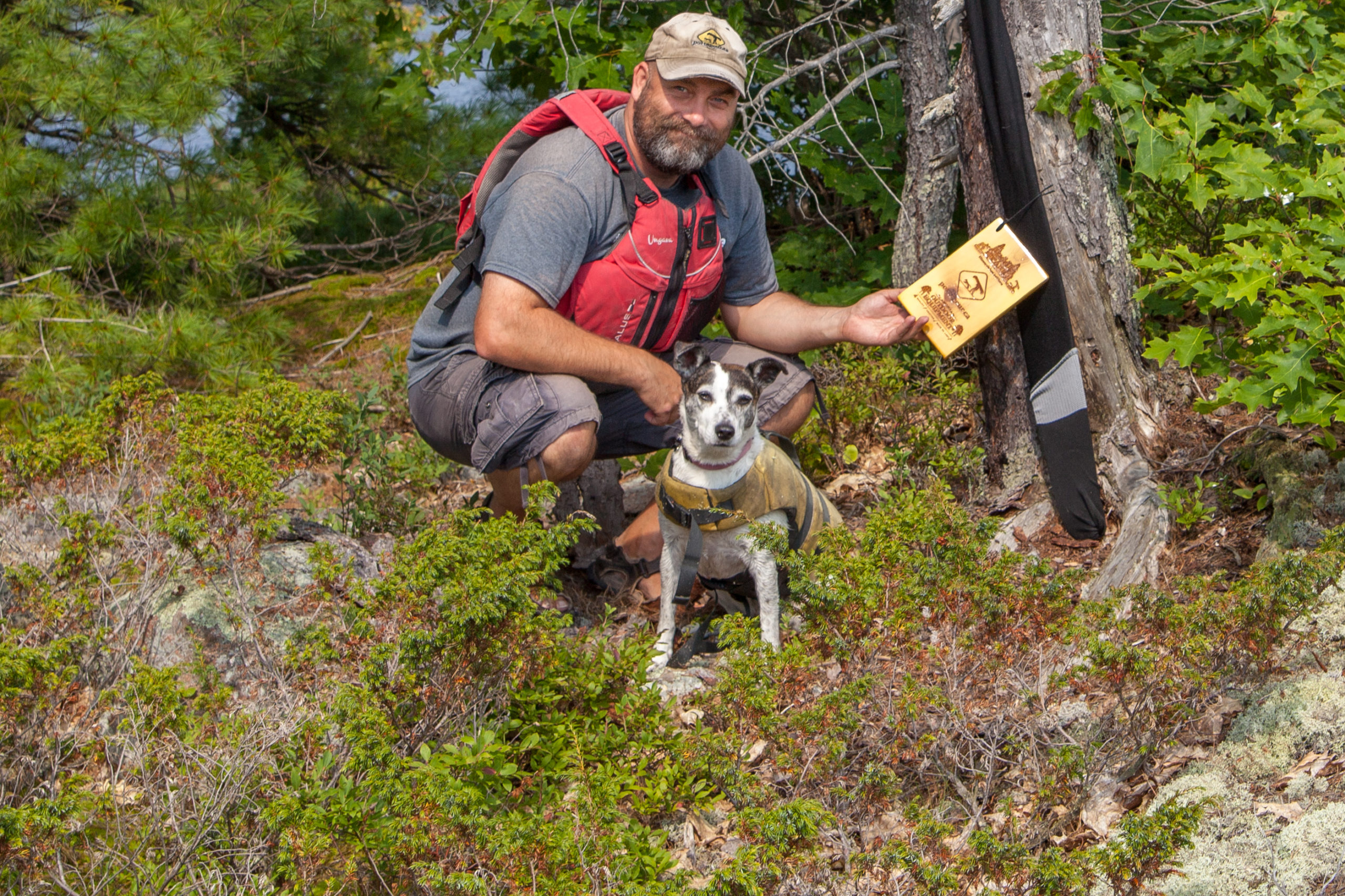Wandering Around Out There With A Canoe On My Head
Wandering Around Out There With A Canoe On My Head
 If you’ve already picked a route, you can skip this step, although you may want to give the route a once-over for your (or your group’s) needs. If you’ve picked up a route from some hardcore woodsman, you may find yourself stuggling to get through it. Assuming you’re not carrying around fur pelts in a big HBC canvas case, you’re probably on vacation, so you don’t want to over-exert yourself, hurt yourself or even find yourself halfway through the trip too exhausted and sore to get back.
If you’ve already picked a route, you can skip this step, although you may want to give the route a once-over for your (or your group’s) needs. If you’ve picked up a route from some hardcore woodsman, you may find yourself stuggling to get through it. Assuming you’re not carrying around fur pelts in a big HBC canvas case, you’re probably on vacation, so you don’t want to over-exert yourself, hurt yourself or even find yourself halfway through the trip too exhausted and sore to get back.
How far to travel?
Of course, if you’re just starting out, you may not know how far is too far. If you’ve never been out portaging before, I’d recommend an absolute maximum of 8-10 kilometres (5-6 miles). Now, that is depending on how much portaging you’re doing, how enthusiastic you are, and expecting that you’ll be traveling pretty much all day. Decrease that number as needed, considering the following.
To loop or not to loop
The best routes are loops: a route that you will not cover the same area and return you to the starting point. You’re out there to explore, and this way the whole route is places you haven’t been. Unfortunately, rivers and lakes don’t always cooperate with this idea. This leaves you with two options: The most obvious is to go one way, then turn around and come back. This isn’t a big deal. I mean, if it was nice to visit the first time, it’s bound to be the second. More often than not you’ll actually see things you didn’t the first time. It also cuts the route planning in half. Finally, the last option is using a shuttle. This is most commonly where you canoe to a point, then have your group and gear driven back to the starting point. This option is best if there’s no (realistic) loop option but you still want to travel the most distance or not double back. Of course, shuttling still takes time, and you’re going to have to consider that in your plan. Obviously, there also needs to be a road that leads to your take out.
Planning the route
 So how do you plan a route? That’s actually the fun and easy part. Get a map of the place you want to go. It should be accurate (duh!) and up to date. Ideally, the map will also have topographical and geographical markers in the best case, but at least campgrounds and portages with their lengths. Measure out some appropriate distances you’re willing to travel in a day and mark the spot to the closest campsite to stay for the night. Now take a second look at some of the obstacles that might make that distance take more time and adjust it. Then from that spot, keep measuring out days until you’ve either finished the route or have run out of vacation time. This can also be done more easily and accurately with GPS or mapping software.
So how do you plan a route? That’s actually the fun and easy part. Get a map of the place you want to go. It should be accurate (duh!) and up to date. Ideally, the map will also have topographical and geographical markers in the best case, but at least campgrounds and portages with their lengths. Measure out some appropriate distances you’re willing to travel in a day and mark the spot to the closest campsite to stay for the night. Now take a second look at some of the obstacles that might make that distance take more time and adjust it. Then from that spot, keep measuring out days until you’ve either finished the route or have run out of vacation time. This can also be done more easily and accurately with GPS or mapping software.
Now give the whole trip a once-over and consider how realistic it is. Also consider how you’re going to get to the put in and get back from the take out, whether you’ll need to shuttle and how long all that will take, and see if the whole plan fits into your allotted time. If it passes, share it with the group that’s going with you for feedback. If they like it, you’re ready to go.
Have a planning party
Consider having a planning party with the entire group. This is a great reason to get together, for one. It’s also a great way to make sure everyone’s on the same page with the expectations of the trip. Remember: always plan to the lowest level of enthusiasm, physical ability and skills (canoeing, camping etc). Otherwise, you’re just setting yourself up for conflict and possibly danger. You don’t want to have planned the perfect trip only to find out that everyone’s scared off by one of the portages.
Planning the route should be a fun activity. An unplanned trip is full of possibilities, and it’s up to you to figure out how to realize them.

Session expired
Please log in again. The login page will open in a new tab. After logging in you can close it and return to this page.